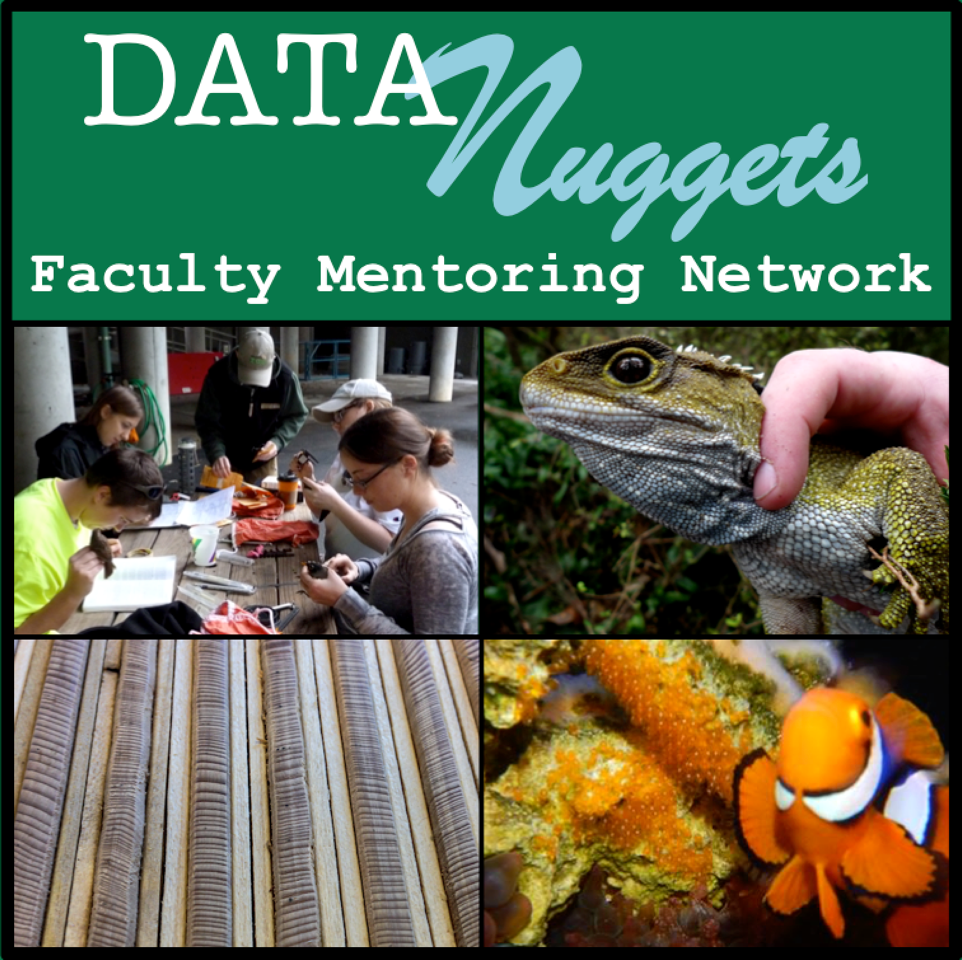Winter is Coming! Can you handle the freeze?
Author(s): Liz Martin
3912 total view(s), 4584 download(s)
Winter is Coming_Answer sheet.pdf(PDF | 828 KB)
Winter is Coming_editted.pdf(PDF | 8 MB)
- License terms
Description
This resource is an adaptation of the Data Nugget, Winter is coming! Can you handle the freeze?
Background information - Background information on natural and artificial selection (following the textbook used with the class) was presented as lecture material using the online program SoftChalk. With SoftChalk, students can work through at their own pace. The program presents bulleted lecture material with embedded videos, animations, and “Quiz Yourself” questions (these are similar to clicker questions in a face-to-face class) throughout the lecture.
Implementation - The Data Nugget was part of a homework assignment to accompany the lecture material. The Data Nugget provided students an example of research looking at natural selection. Students also worked through an online simulation of artificial selection with mustard crops. One learning objective of this unit was for students to describe similarities and differences between artificial and natural selection.
How the resource was edited - This is a long Data Nugget and because of this, I did edit it down. I kept all the background information the same, but I did remove/streamline/change some questions. Also, the file size for this Data Nugget is very large and created issues when uploading and downloading from Blackboard, our online course management system. To troubleshoot this, I split the assignment into two documents: 1) a document with the background information, graphics, and other info students needed to complete the assignment but did not need to down/upload and 2) an answer sheet they would upload with their answers.
What worked well - This module was very effective at teaching local adaptation. Also, it provides a great example of the iterative process of science where scientists use results from one experiment to ask a subsequent question. In this Data Nugget, the first part uses data to show that local adaptation exists and the second part follows up on this to provide a mechanism for adaptation.
Changes for next time - To emphasize the iterative nature of science exemplified here and to address the lengthiness of this Data Nugget, I will split it into two sections next time. The first part will cover the field experiment and the second part will begin at “Doug’s next steps”. I will also add the question on “Your next steps as a scientist” to the end of part 1. After students brainstorm what they will investigate next, I can present what the scientist did next with Part 2.
What I know now that I didn’t know then - At the time that I gave this to my students, I didn’t realize this was longer than the typical Data Nugget. Students did get a bit turned off to Data Nuggets in general because of the length of this one. But knowing this, I will introduce it differently next time!
Cite this work
Researchers should cite this work as follows:
- Martin, L. (2018). Winter is Coming! Can you handle the freeze?. LDC-Data Nuggets FMN (2017), QUBES Educational Resources. doi:10.25334/Q4KQ4C
